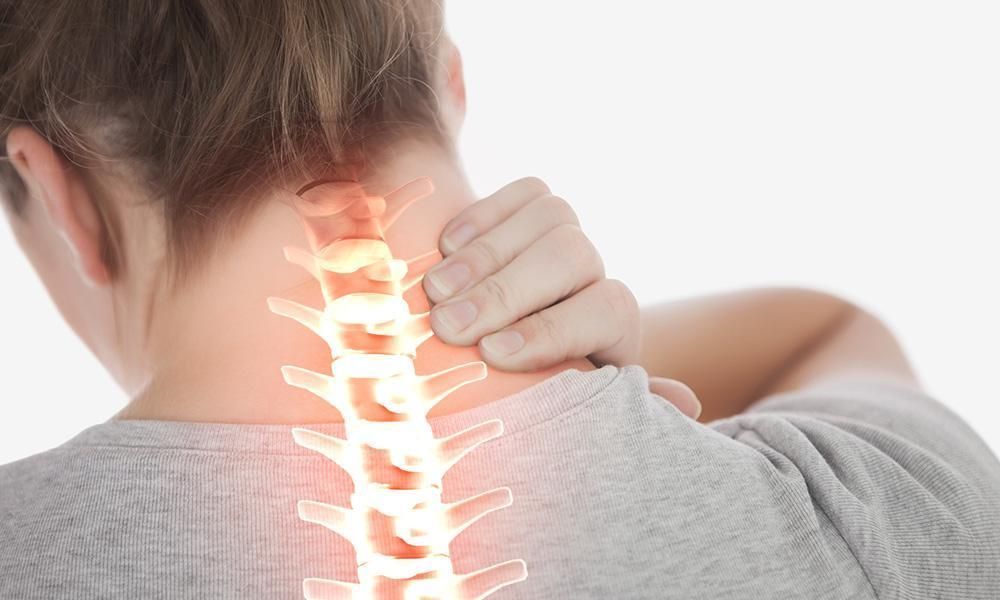Understanding Sciatica: Prevention and Treatment through Chiropractic
What is Sciatica?

Nearly everyone will have back pain at some point in life, but with sciatica, you'll know
something is different immediately. Pain that begins in your back travels down to your buttocks,
and shoots down your leg is a classic sign of sciatica. The shooting pain down your leg is
caused by compression on nerves exiting your spine. Even a tiny amount of pressure can
cause tremendous pain, so getting rid of the inflammation and opening up space for the nerve
is essential to start finding relief.
Pinching or compression on a spinal nerve can occur because of an injury to one of your spinal
discs (such as disc herniation), the development of a bone spur, or ligaments that have
increased in size. Either way, it's likely to cause pain and discomfort until you can decrease the
inflammation, open up space for the nerve, or improve the movement of the spinal joint.
·Sciatica occurs when a spinal nerve gets pinched by a disc, bone spur, or ligament and can cause pain that travels down the buttocks and leg
·Research has discovered that 60% of people with sciatica benefitted from chiropractic
adjustments to the same degree as if they underwent surgical intervention
(without any risks!)
·Exercise and rehab can help strengthen the muscles supporting your spine and reduce the
likelihood of a relapse.
What You Need to Know About Sciatica
Sciatica is leg pain, numbness, or tingling that originates in your low back. And wow, can it hurt!
The sciatic nerve is the largest nerve in the body. It is made up of individual branches or nerve
roots in your lower back that combine to form the sciatic nerve, which then travels down into
your legs. Increased leg pain when sitting, weakness in your leg/foot, and sharp pain that
makes walking difficult are common symptoms people experience when the sciatic nerve is
pinched or irritated.
Did you know that sciatica often resolves without resorting to risky medications or dangerous
surgery? Research has shown that 89% of patients suffering from sciatica responded very well
to chiropractic adjustments. Medications or injections are no longer a first-line treatment due to
their risks and limited effectiveness. Also, if you've thought about therapy that doesn't include
spinal mobilization, here is something to consider: a recent paper found that 20% more patients
experienced relief with spinal adjustments than exercise alone.
·Nerve roots in your lower back combine to form the sciatic nerve
·The sciatic nerve travels from your lower back down into your buttocks, legs, and feet
·Research shows over 89% of patients with sciatica respond well to chiropractic care
The Top Causes of Sciatica Revealed
Sciatica is pain caused by the irritation or compression of nerves in your lower back. When a
nerve is compressed or irritated by a spinal disc, bone spur, or ligament overgrowth, it can
become inflamed and painful. This can occur due to age, the stress of gravity on your skeletal
system, or injuries to your back. Stenosis (spinal column narrowing), disc herniations, or degenerative disk disease are other common causes of sciatica.
Think of your nerves like small, high-powered electrical lines. They transmit signals from the
power station, your central nervous system, to all your body’s muscles, organs, and cells. The
electrical lines or nerves in your low back travel down your hips, buttocks, and legs to your feet.
If the nerve is irritated at the power station, it will affect everything along the path of that line.
That is why a spinal disc irritating a nerve in your low back can result in pain down into your leg!
·Burning, numbness, or tingling in your leg could be caused by a pinched nerve in
your low back
·Staying active with daily exercise, stretching, and periodic chiropractic care can
help prevent issues in your low back
·Over 90% of patients with sciatica reported being "much better" or "better" after receiving
chiropractic care
How to Prevent Sciatica Pain
It's easy to understand how lifting a heavy object at work could injure your back, pinch a nerve,
and cause sciatica. But, surprisingly, research has shown that too much sitting may be the worst
thing you could do for your back. When you spend hours per day sitting down, the muscles that
support your low back can start to deteriorate or atrophy. Without strong, stabilizing muscles to
support your discs and nerves, it's no surprise that you are more likely to injure your back, even
when lifting lightweight items around the house.
Fortunately, preventing sciatica may be easier than you think. New research indicates that
consistent exercise can stop or even reverse the effects of too much sitting. Thirty minutes of
exercise each day can help strengthen the supporting muscles around your spinal column and
help prevent future episodes of sciatica. Getting periodic spinal adjustment may also be a great
idea. The top research journal SPINE found that maintained chiropractic care can evaluate,
detect, and potentially prevent future disc problems and low back pain episodes.
·Chiropractors can help evaluate, detect, treat, and prevent future episodes of low back pain
·Exercise daily to help strengthen the core muscles that support your spinal column
·Stretch before and after activity to improve your flexibility and reduce your chances of injury
Next Steps:
Take action by setting a daily schedule of exercise. If time is tight, just take a few minutes every
hour at work to walk around the office. Remember, starting small is better than not starting at
all. And, as days become weeks, months, and years, the exercise you do now will pay huge
dividends down the road to keep you happy, healthy, and pain-free. If you have struggled with
recurrent or chronic low back pain, be sure to have your next appointment scheduled in our
practice to stay proactive with your health.
Science Source:
Manipulation or microdiskectomy for sciatica? A prospective randomized clinical study.
JMPT 2010
Outcomes of Acute and Chronic Patients with Magnetic Resonance Imaging-Confirmed
Symptomatic Lumbar Disc Herniations Receiving High-Velocity, Low-Amplitude, Spinal
Manipulative Therapy: A Prospective Observational Cohort Study with One Year Follow-Up
Journal of Manipulative and Physiological Therapeutics. March/April 2014
Outcomes of Acute and Chronic Patients with Magnetic Resonance Imaging-Confirmed
Symptomatic Lumbar Disc Herniations Receiving High-Velocity, Low-Amplitude, Spinal
Manipulative Therapy: A Prospective Observational Cohort Study with One Year Follow-Up
Journal of Manipulative and Physiological Therapeutics. 2014
Does Maintained Spinal Manipulation Therapy for Chronic Nonspecific Low Back Pain Result in
Better Long-Term Outcome? SPINE. 2011
Does Maintained Spinal Manipulation Therapy for Chronic Nonspecific Low Back Pain Result in
Better Long-Term Outcome? SPINE. 2011










